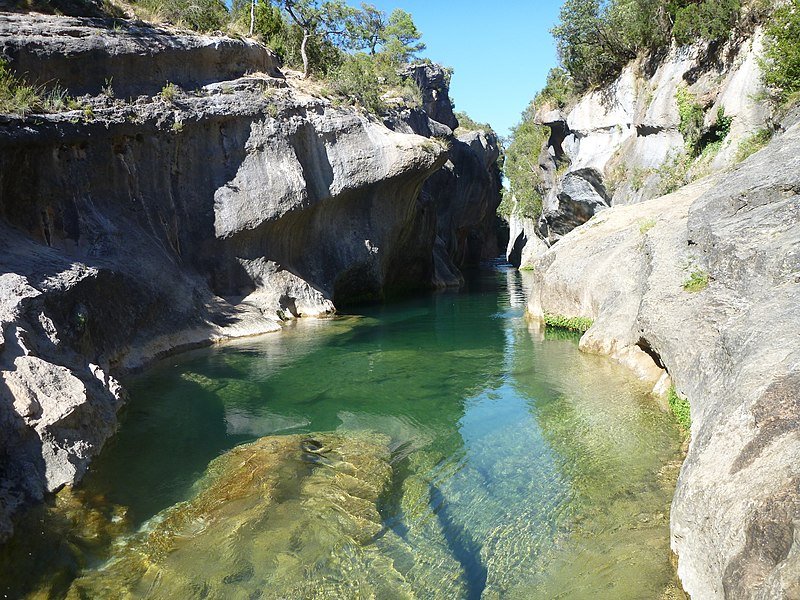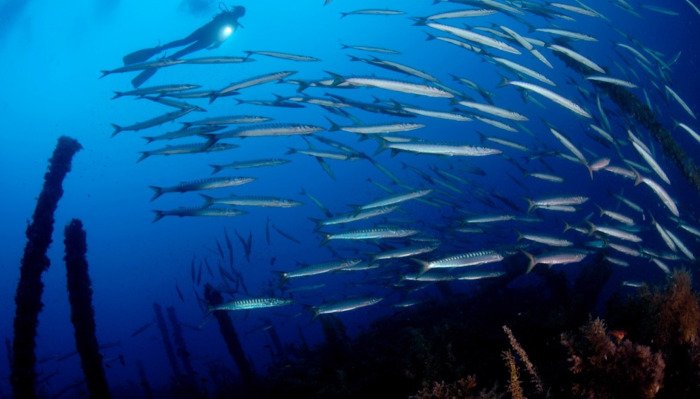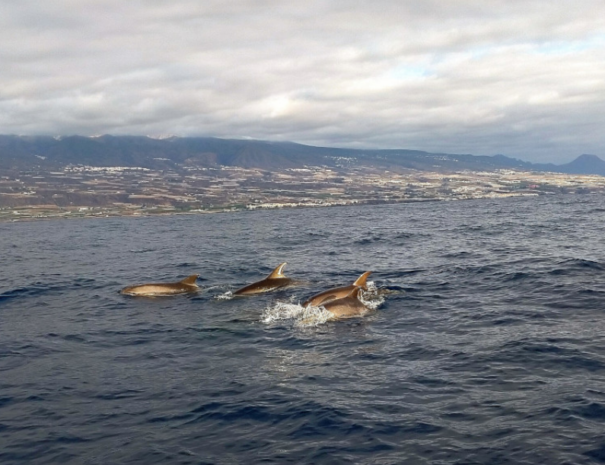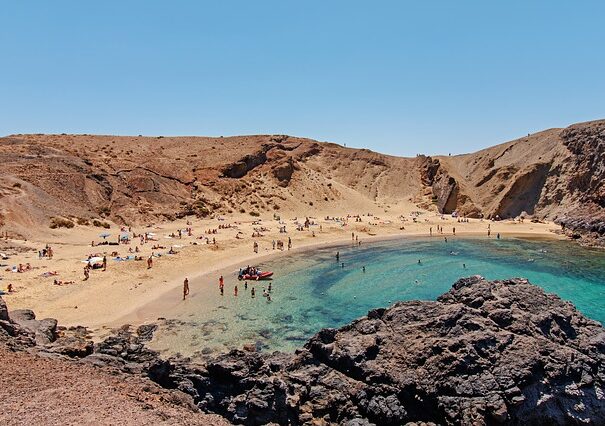Water Sports In Spain
Best water sports to enjoy in Spain
There is much more in Spain than the heritage, the Fiestas, or the gastronomy that shape up Spain’s culture. Next to its more than 500 kilometers of shoreline, a whole world of activities is waiting for you.
WATER SPORTS IN SPAIN
Marine life in Spain profits from shipwrecks (some of them, historical ones), sheer walls, and caves. The Mediterranean coast has traditionally been the most famous area to enjoy scuba diving, and places like Las Islas Medas marine reservoir hold a unique position amongst advanced divers. But other sites like La Costa del Costa, de Balearic islands, the Canarian archipelago, and even the northern coast (with colder Atlantic waters but a fascinating underwater world) offer diving courses, diving centers, and a good number of top dives to be enjoyed by all levels.
If diving but not be the most popular water sport in Northern Spain, the opposite can be said of surfing. High-class spots can be found through the Northern beaches of Spain from the Basque country all the way to Galicia. Our favorite time of the year to enjoy surfing is Autumn and spring, when the beaches are not yet crowded. October is probably the best month, with water temperatures still high. Spain’s most famous waves are likely found in Mundaka, Basque country. Still, you will find similar quality and smaller crowds in some of the best beaches in Northern Spain. Like in Cantabria (Liencres) or Asturias (Rodiles) or in the Costa da Morte in Galicia.
If surfing is best enjoyed in the north, our next water sport, windsurf, finds its best spots in the South and in the Canary Islands. Tarifa is an icon in this respect for wind and kitesurfers alike. Its ten kilometers of sandy beach offer one of the best places in the world to enjoy windsurfing. If Tarifa is exceptional, Fuerteventura in the Canary Islands is not to be missed either! And you will be able to find excellent windsurfing opportunities in the Mediterranean coast in areas like Oliva in Valencia, or in La Costa Brava, and in the northern coast in Galicia.
The following guides cover different water sports in Spain. You will find in them detailed information to enjoy these sports during your vacation in Spain.
SURF IN SPAIN: THE ULTIMATE GUIDE
There have been a lot of world-renowned surfers coming to the Northern coast to enjoy the surf in Spain because of the large number of beaches on the coast where one can find the perfect waves to surf on – suitable for people of all levels.
Starting in the Basque country, where the waves can go from 0.5 meters to 6 meters high, you’ll find surf spots like Punta Galea, Menakoz, Playa Gris, Orrua, Lemoiz, Matriku, Zarautz, and the Zurriola beach in Donostia (an urban beach with an amazing surfer atmosphere where a lot of competitions are held).
Top Surfing sites in Northern Spain
The northern coast of Spain spans over 800 kilometers and it is home to some of the best surf beaches in all of Europe, and maybe even the world. Spain is the most popular surf destination in Europe due to its consistency throughout the year. It is also a very versatile coast, offering waves for all levels and styles. Check out our top ten picks of the best beaches in Northern Spain:

- Mundaka, Basque Country: If you are into surfing, you probably already know about Mundaka. It is one of the most highly renowned Spanish beaches for surfing in the world, if not the most. Mundaka is well known for its giant waves, its long tubes, and long-lasting waves.
- Razo, Galicia: Razo is a long sandy beach with many sandbars that create A-shaped waves that are ideal for all levels. The beach is consistent because it is very open and even the smallest of swells get all the way to the beach. Because the beach is so big it rarely gets crowded which makes it a perfect spot for smooth surfing. In addition, in Razo, you will find the famous ArtSurfCamp, so its a great place to go to learn how to surf.
Meñakoz, Basque Country: Before we get into it Meñakoz is a very dangerous big wave spot, and should only be surfed by experts! This being said it enjoys a great reputation among big wave surfers across Europe. Meñakoz seemed to gain more and more popularity each year, attracting large and larger crowds to surf this wave. However, you have to be careful with the locals. If you feel up to this challenge, get ready to face waves of over 5 meters, sharp rocks, strong currents, and much more. If not, you always have the option of watching the wave surf from the cliffs.
Rodiles, Asturias:AKA Mundaka’s little sister. In Rodiles you will also find world-class waves, slightly smaller and shorter than the ones in Mundaka, but still top-notch. It offers left pipes of up to 3 meters. However, due to the strong currents, we only recommend this spot to intermediate or advanced surfers. It is also somewhat of a “fan-favorite” and can attract large crowds at times.
Sopelana, Basque Country: Sopelana, located just outside of Bilbao, is one of the more beautiful spots, with a mixture of sand and rocks, and known for the great variety of waves it offers. On the other hand, it is also one of the most crowded spots in Spain, so if what you are looking for is a quiet spot, this isn’t the place for you.
Zarautz, Basque Country: Another very popular beach on the northern coast of Spain is Zarautz, just a few kilometers from the amazing city of San Sebastián. It is a sandy beach and it is usually pretty crowded. It has been the site of some world-class competitions such as the WQS which takes place every September. That shows the great capacity of this spot. It is versatile enough to accommodate all levels, but always be mindful of the other surfers! It is very important to respect the rules in spots like these.
Nemiña, Galicia: Nemiña is an ideal spot for surfers of any level. In addition, it is located in a very quiet and picturesque area, so if you are looking to avoid crowds, this might be a good option for you. However, it offers some very fun waves to surf. In addition, it has a caravan campsite on the beach that is perfect for enjoying the tranquility and surf of Nemiña for a couple of days.
Santa Marina Island, Cantabria: A reef break known for its big and strong rights. As the name implies, the waves break on an island that you have to reach by paddling. These waves offer heart-stopping vertical drops, solid walls, and sometimes long pipe sections.
Somo, Cantabria: If what you are looking for an excellent all-around surfing experience this might be your spot. Here you will find everything: surf shops, surf schools, campsites, restaurants, bars … you really couldn’t ask for more. It is one of the most consistent surf spots in Spain. It features a huge beach with many peaks and is ideal for all levels.
SAILING IN SPAIN
In the Mediterranean Sea you can enjoy authentic idyllic beaches with turquoise water, in between green landscapes, and cliffs without needing to travel very far. Saling in Spain is about this, but also about stronger winds in the northern coasts.
The only thing you will hear while sailing is the sound of the wind pushing your boat through the water and the waves crashing against the hull. The boat trip will allow you to access small hidden beaches in Mallorca, Menorca and Ibiza that are only accessible by the sea.

While choosing a quiet cove to spend the night, you will be protected from the winds of the sea and be able to enjoy the turquoise waters under a splendid starry sky. You can navigate between Mallorca and Pitiusas, enjoying the sights of dolphins playing in the water from the prow of the boat.
Leaving from the Mallorca Port, you can circumnavigate the island or make a slightly longer journey if you want to lose sight of the shore by heading towards Ibiza. You will be able to glance over the Pitiusas Islands and enjoy the beaches and coves of Formentera.
Wind conditions of the Palma Bay, with its numerous marinas, make this the perfect place for sailing enthusiasts who can enjoy the Copa Del Rey Regatta in July.
In the bay you can also find beautiful coves auch as Cala Portal Vells – one with crystal clear waters and an ancient quarry. Stone blocks were extracted from the quarry and used to build the Cathedral, which is an important part of the landscape, thus making sailing past the bay an unforgettable experience.
If you decide to circumnavigate the island, heading in the southeast direction, you will find various coves and beaches of unparalleled beauty like Cala Pi, Strenc Beach, and Colonia de Sant Jordi – where you can navigate onward to the National Park of the Cabrera Archipelago. On such cruises, after losing sight of the coast, you can see dolphins swimming. Once in Cabrera you can visit spectacular caves under stunning-colored rocks, go snorkeling and if lucky swim with turtles. A permit is needed to drop anchor in Cabrera.
Back on the island you can head northeast through the coves of Santanyi, noting for example Cala Figuera where you’ll find a water inlet between the cliffs. It ends by opening into two arms formed by the junction of two streams, Caló d’en Busques and Caló d’en Boira, which offers the best protection for anchoring small boats. Its unique landscape consists of old stone houses of fishermen and their “escars” which are the holes dug into the rock in order to beach their small boats between rock cliffs and pine trees overlooking the sea.
If you head north, you’ll find Porto Cristo, and the Bays of Alcudia and Pollensa from where you can sail to Menorca. You can also take the island’s north route to Soller – a more challenging route because of its scarce ports on the one hand and its feared Tramontana wind which often leads to frequent storms.
Once in the north, you must make a mandatory stop in Sa Calobra which is at the mouth of the “torrent of Pareis” in the middle of Sierra de Tramuntana. Although there are the smooth pebbles formed by the torrent there is also a very interesting inland visits along the torrent; you can see the different lakes fomed in between the mountains.
Finally, you will face the stretch heading west to the Natural Park of the Island of Sa Dragonera, named because of its shape resembling a dragon. By heading south you will pass through the Port of Andratx, the Bay of Santa Pontça and finish the tour by arriving again at Palma Bay.
CANYONING IN SPAIN
The geography of Spain has multiple gorges and ravines between mountains that run the rivers, full of landscapes and beautiful places that are only accessible by narrow paths guided by professionals and are the perfect setting to do canyoning, descend down some dangerous water or rafting.
The descent of canyons, or canyoning, is a semi-aquatic sport that enables you to come in direct contact with nature. Canyoning consists of: following the course of the river from a high point while avoiding all types of natural obstacles, passing through gorges and sliding down natural rock slides that have been polished by water. You will require more experience and training for jumping into deep ponds, passing through siphons, and going down waterfalls and vertical walls.
The way to measure the difficulty of the descents comes in 3 levels; for all of them you need to be able to swim so that you can really enjoy the outdoor adventure. Starting with the easiest level, level 1, suited for kids 10+. Level 2 is for kids 12+ with a bit more difficulty but it is also suitable for families and friends who have a bit more experience. Finally you have level 3, which is suitable for kids 14+ and for canyoners who are looking for adrenalin, including more challenging routes and higher jumps.
Canyoning is not suitable for people that are afraid of height or have vertigo and you always have to be accompanied by an expert or a local guide. Moreover it is important to mention that, depending on the difficulty of the chosen route, it might take up the morning or even the whole day.
To take part in canyoning you need to have the following equipment: a bathing suit, a towel and light walking shoes since the mountain equipment will be supplied by the company or the guide (such as the wetsuit, the helmet, sippers, ropes and harnesses – if needed).
Things like insurance, food, transport to the starting point and the rest of the technical equipment is given to you by the company and they usually charge about 50 euros for half a day or 100 euros for the whole day.
A few of the spots where you can do canyoning in Spain are:
In Huesca: in the Sierra and Canones de Guarra Natural Park you can do Canyoning on top of waterfall descents in kayak and rafting in the Gallego River, Ara River or the Esera River.
Lerida, Noguera Payaresa: has one of the best spots for canyoning and rafting in all of Europe with views of the Pyrenees; the best season to go coincides with the melting of the ice in May and June.
In the center zone, you can find the Jucar Canon, the Pollatos Canon and the Hoces Del Cabriel close to Valencia. Also in Guadalajara in the Alto Tajo Natural Park there is the Jump of Poveda containing different difficulty levels where all of the routes have ponds, slides and rapids.


In Avila you also have various spots in Gredos and Adrada, Enebro and in the Nava, however these last three are level 3 courses that require a bit more experience and numerous rappels.
In Caceres you can also find a few canyoning zones for excursionists with less experience. It is a place where you will find very suitable courses for beginners; the Desesperada and Garganton courses are level 1.
In Andalucia you can go canyoning from the source of the Verde River in Granada, the Sima of the Devil and also in the Tajo in Malaga.
SCUBA-DIVING IN SPAIN
The network of specialized diving and countless sites in the islands makes this sport one of the most widespread. Scuba diving is made possible at every level of experience as there are departures from shallow beaches or dives at greater depths to visit wrecks. You also have the opportunity to do night dives and cave diving (for instance in the vicinity of the caves of Drach departing from Porto Cristo).
In recent years, the number of natural reserves in the Balearic islands has increased, allowing the seabed to recover many of its native species such as its impressive groupers and moray, conger eels and breams – completing its fauna and flora.
As for the best diving spots in Mallorca we can point out: the Tramuntana spot in the north; the Cap de Formentor; the Morro de Sa Vaca, situated in the mouth of the Torrent de Pareis and the Isla de Dragonera in the south along with Bahia de Palma. In the northeast through Bahia de Pollença you will find diving areas suitable for those with less experience. To the east of the Cala Varques, with its numerous caves and coral reefs, you will find diving spots for those more experienced.

On the Island of Menorca and in its caves, you will be able to dive regardless of your level. Forcat is for the less experienced; galleries of coral and sea anemones. For more experienced divers you will find much including a sunken ship.
In Ibiza, and around the largest of the Pitiusas Islands, you’ll find various small islands perfect for scuba diving like Es Vedra, Tagomago and the site of the largest shipwreck in Europe: Don Pedro cargo ship – found 47 meters below sea level. This dive is for very experienced divers with a minimum of registered dives.
Between Ibiza and Formentera you’ll find the marine reserve of Ses Salines that was declared a World Heritage Site by UNESCO in 1999. It is the largest protected area of the Spanish Mediterranean, where the richness of the landscapes captivates with its Posidonia seagrass meadows and its vertical walls of a stunning red gorgonian coral.
Lastly, there is Formentera with numerous diving spots of various levels, difficulty, and beauty. Starting with simple and shallow dives, you have the Arco and Punta Gabina spot that are spectacularly beautiful with a lot of scenery to enjoy. For deeper, more advanced dives there is the Plataforma area and the Florin Brother’s sunken fishing boat.
More Info on Spain

Dolphin And Whale Watching In Tenerife
Check out our full guide to dolphin and whale watching in Tenerife. The Canary Islands a a premiere location for dolphin and whale watching. … Read More

Snorkeling And Scuba Diving In Lanzarote
Snorkeling and scubadiving are unskipable attractions for any toursit of the island Lanzarote. From the Papagayo beaches to the Playa del Carmen, the locations that the island offers are limitless, and so are the species that you can encounter
… Read More
